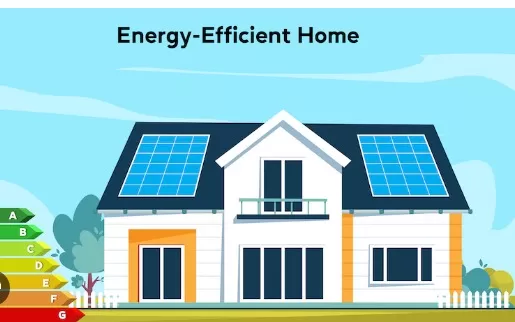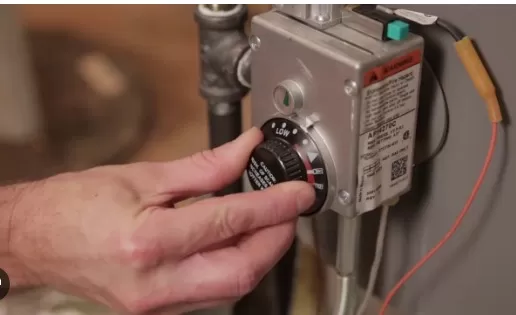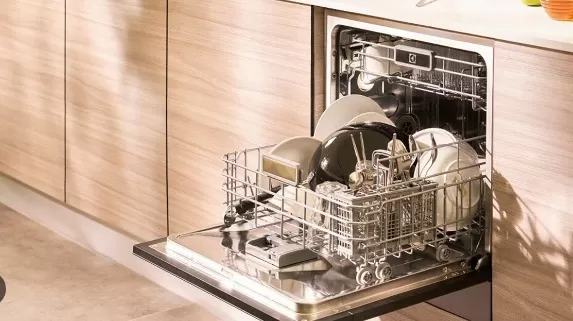Ways to Put Your Home on an Energy Diet. Implement these tips for conserving energy at home and reduce your utility expenses. By adopting these home-energy saving ideas, not only will you save money, but you’ll also contribute to a greener environment.
Making Small Changes like using energy-efficient appliances, insulating your home properly, and turning off lights and electronics when not in use can make a significant difference in your energy consumption and overall savings. Start implementing these ideas today and reap the benefits of lower utility bills while being mindful of your ecological footprint.
Energy-Saving Tips: Put Your House on a Power Diet

Running a household can be an energy-intensive endeavor, with numerous devices and appliances constantly drawing power.
If you’ve been looking for ways to reduce your energy consumption and lower your utility bills, you’re in luck. In this article, we will share some simple yet effective energy-saving ideas that can be easily implemented in your daily life.
By making small changes, you can start seeing significant savings without sacrificing your comfort or convenience.
Unplug Unused Devices: Many electronic devices continue to draw power even when they’re turned off or in standby mode.
This phenomenon, known as “phantom power” or “vampire energy,” can contribute to a significant amount of wasted energy. Get into the habit of unplugging chargers, appliances, and electronics when they are not in use.
Alternatively, you can use power strips with switches to easily cut off power to multiple devices at once.
Optimize Your Thermostat: Heating and cooling your home can consume a substantial amount of energy.
Take advantage of programmable thermostats to create a temperature schedule that aligns with your Daily Routine. Lower the temperature during times when you’re away from home or asleep, and raise it when you’re active and in need of comfort.
Additionally, consider using Ceiling Fans to circulate air and provide a cooling effect, reducing the need for excessive air conditioning.
Upgrade to Energy-Efficient Lighting: Traditional incandescent light bulbs are energy hogs and have a short lifespan.
Replace them with energy-efficient options such as LED or compact fluorescent bulbs. These bulbs use significantly less energy and can last much longer.
Additionally, make it a habit to turn off lights when you leave a room and make the most of natural light during the day.
Seal and Insulate: Proper insulation and sealing can prevent energy loss, keeping your home comfortable and reducing the need for excessive heating or cooling.
Inspect your windows, doors, and other potential areas of air leakage. Apply weatherstripping, caulk, or insulation to seal any gaps or cracks.
This will help maintain a consistent indoor temperature and Save Energy.
Choose Energy-Efficient Appliances: When it’s time to replace household appliances, opt for energy-efficient models.
Look for appliances with the ENERGY STAR label, as they meet strict energy efficiency guidelines. Energy-efficient appliances consume less electricity and water, saving you money over their lifespan.
Be sure to also practice smart energy habits, such as running full loads in your dishwasher and washing machine, and air-drying clothes whenever possible.
Save Energy and Money: Unplug Your Gadgets
Did you know that even when your gadgets and appliances are turned off, they can still be consuming power? This phenomenon, known as “vampire power,” not only adds to your energy bill but also contributes to unnecessary energy waste.
In this article, we’ll explore the concept of vampire power and share a simple yet effective solution: unplugging your gadgets when they are not in use. By taking this small step, you can save both energy and money.
Understanding Vampire Power: Vampire power, also referred to as standby power or phantom load, occurs when electronic devices continue to draw power from the electrical grid even when they are switched off or in standby mode.
This wasted energy adds up over time and can have a significant impact on your energy consumption and bills.
Identify Vampire Power Culprits: Start by identifying the devices and appliances in your home that are known to consume vampire power.
Common culprits include phone chargers, laptops, gaming consoles, televisions, coffee makers, and toasters. These devices often have standby modes or power indicators that remain active even when they are not in use.
Unplug When Not in Use: The simplest and most effective solution to eliminate vampire power is to unplug your gadgets and appliances when they are not in use.
Get into the habit of unplugging phone chargers as soon as your device is fully charged, turning off power strips that supply electricity to multiple devices, and disconnecting appliances that are not needed throughout the day.
Use Smart Power Strips: If unplugging every device individually seems inconvenient, consider using smart power strips.
These power strips have built-in mechanisms that can detect when a device is not in use and automatically cut off power to that device. This way, you can easily control multiple devices with just a flip of a switch.
Educate Your Household: Make sure to educate everyone in your household about the importance of unplugging gadgets when not in use.
Encourage family members to develop the habit of turning off and unplugging devices, emphasizing the energy and cost savings associated with this practice.
Save Energy and Money: Adjusting Your Water Heater Temperature

Did you know that simply adjusting the temperature setting on your Water Heater can lead to significant energy savings? In this article, we’ll explore the benefits of lowering your water heater’s thermostat and provide you with practical tips on how to optimize its temperature settings.
By making this small adjustment, you can save money on your energy bills while still enjoying ample hot water for your household needs.
The Impact of Water Heater Temperature: The temperature at which your water heater is set directly affects energy consumption and costs.
Higher temperatures require more energy to heat the water, leading to increased energy usage and higher bills. By adjusting the temperature, you can achieve a balance between energy efficiency and meeting your hot water needs.
Recommended Temperature Setting: While some manufacturers set water heater thermostats at 140ºF, this temperature is often unnecessary and can lead to energy waste.
For most households, a temperature setting of 120ºF is more than sufficient to provide comfortable hot water for daily needs, including bathing, dishwashing, and laundry.
How to Adjust the Water Heater Temperature: To adjust the temperature of your water heater, follow these simple steps:
a.Locate the thermostat dial or control panel on your water heater. It is usually found near the bottom or on the side of the unit.
b. Use a screwdriver or the provided temperature adjustment knob to lower the temperature setting to 120ºF.
c. Allow the water heater to stabilize at the new temperature for a few hours before testing the water temperature at a faucet.
Safety Considerations: While lowering the water heater temperature is beneficial for energy savings, it’s important to consider safety.
Hot water above 120ºF can pose a scalding risk, particularly for young children or the elderly. By setting the temperature to 120ºF, you can reduce the risk of accidental burns while still maintaining comfortable hot water.
Monitoring and Maintenance: After adjusting the temperature, monitor your hot water usage to ensure it meets your household needs.
If you find that the water temperature is insufficient or too hot, you can make minor adjustments accordingly. Additionally, periodic maintenance of your water heater, such as flushing the tank and checking for leaks, can improve its efficiency and prolong its lifespan.
Optimize Efficiency: Change Your HVAC Air Filters
One of the simplest yet effective ways to improve the energy efficiency of your HVAC (Heating, Ventilation, and Air Conditioning) system is by regularly changing the air filters.
In this article, we will explore the importance of clean air filters, provide guidance on when and how to change them, and discuss the different types of filters available for optimal HVAC performance.
The Impact of Dirty Air Filters: A dirty air filter can significantly reduce the efficiency of your HVAC system.
When the filter becomes clogged with dust, debris, and pollutants, it obstructs the airflow and forces the system to work harder to circulate air. This increased strain leads to higher energy consumption, reduced airflow, and potential damage to the HVAC components.
Frequency of Filter Changes: The frequency at which you should change your air filters depends on the type of filter you have.
Fiberglass filters, commonly found in residential systems, typically need replacement every month during the heating or cooling season. These disposable filters are affordable and readily available.
On the other hand, permanent filters, often made of washable materials like foam or electrostatic materials, require regular cleaning to maintain optimal performance.
Changing Fiberglass Filters: To change a fiberglass filter, follow these steps:
a.Locate the filter compartment, usually found in the return air duct or near the furnace.
b.Turn off the HVAC system to ensure safety and prevent debris from circulating.
c.Remove the old filter and dispose of it properly.
d.Insert a new, clean fiberglass filter, ensuring it fits snugly in the filter slot.
e.Turn on the HVAC system and monitor its performance.
Cleaning Permanent Filters: For permanent filters, regular cleaning is necessary.
Here’s a basic cleaning process: a. Turn off the HVAC system.
b. Remove the filter from its housing.
c. Rinse the filter with water, using gentle pressure to remove dirt and debris.
d. Allow the filter to dry completely before reinserting it into the HVAC system.
e. Turn on the system and check for improved airflow and efficiency.
Selecting the Right Filter: When replacing or upgrading filters, consider the MERV (Minimum Efficiency Reporting Value) rating.
A higher MERV rating indicates better filtration, capturing smaller particles and improving indoor Air Quality. However, higher-rated filters may also restrict airflow, so it’s important to find a balance between filtration efficiency and HVAC system performance.
Efficient Dishwashing: Embrace the Dishwasher for Energy Savings

When it comes to washing dishes, many people believe that hand-washing is more energy-efficient than using a dishwasher.
However, modern dishwashers are designed to be efficient and can actually save water and energy compared to manual dishwashing. In this article, we will explore the benefits of using a dishwasher, provide tips for maximizing its efficiency, and highlight additional ways to save energy during the dishwashing process.
Water and Energy Savings: Contrary to popular belief, dishwashers use less hot water than hand-washing.
By running a full load of dishes in the dishwasher, you can optimize water and energy usage. Compared to letting the tap run while scrubbing,
a dishwasher’s efficient water circulation system ensures that each dish is thoroughly cleaned using a minimal amount of hot water.
Load Your Dishwasher Efficiently: To make the most of your dishwasher’s energy-saving features, follow these guidelines:
a.Avoid rinsing dishes before loading them into the dishwasher, as most modern models are designed to handle food debris. Scrape off excess food, but let the dishwasher do the rest.
b. Fill the dishwasher to its recommended capacity, but avoid overcrowding.
This ensures proper water circulation and efficient cleaning.
c.Use the dishwasher’s energy-saving or eco-friendly cycle options, which consume less water and operate at lower temperatures while still delivering excellent cleaning results.
Air-Drying Dishes: Save additional energy by opting for the air-dry or no-heat drying option in your dishwasher.
Once the final rinse cycle is complete, open the dishwasher door and allow the dishes to air-dry naturally. This eliminates the need for energy-intensive drying elements and reduces overall energy consumption.
Time Your Dishwasher Usage: If your utility company offers off-peak electricity rates, take advantage of them by running your dishwasher at night.
By running major appliances during non-peak hours, you can potentially save on your energy bill and support a more sustainable energy grid.
Additional Energy-Saving Tips:
To further reduce energy consumption during dishwashing, consider the following tips:
a.Scrape excess food into the compost bin or trash instead of using running water to rinse dishes.
b.Use energy-efficient dishwashing detergents and follow the manufacturer’s recommended dosage for optimal cleaning results.
c.Regularly maintain your dishwasher by cleaning the filter and ensuring that spray arms are unobstructed, allowing for efficient water distribution.
*The information is for reference only.